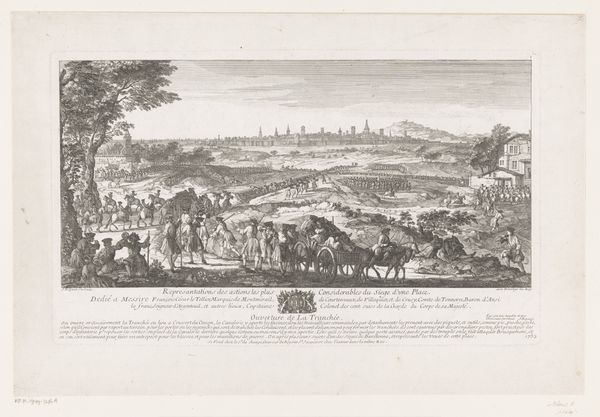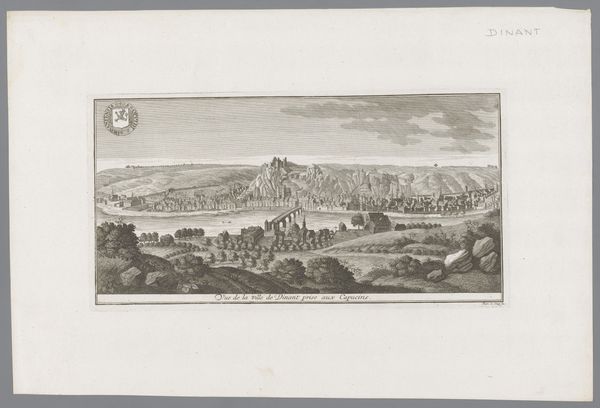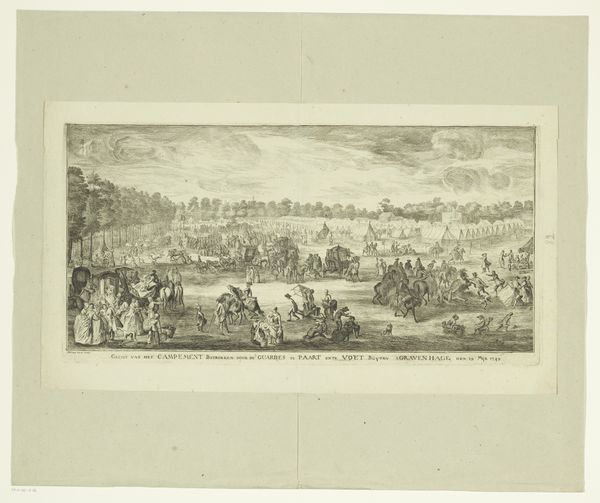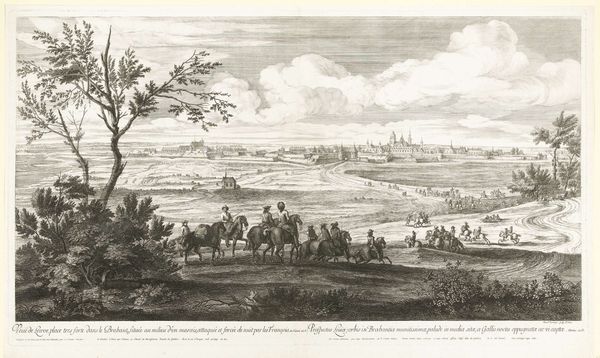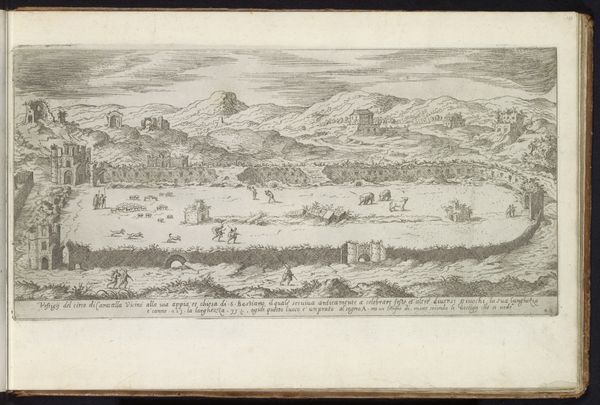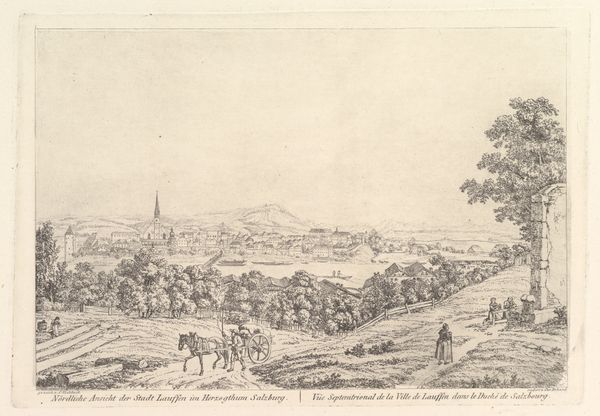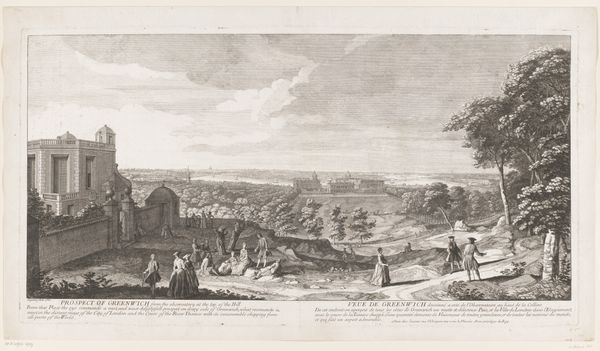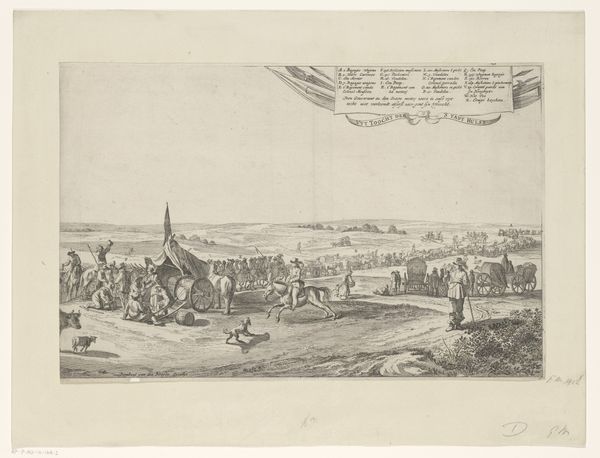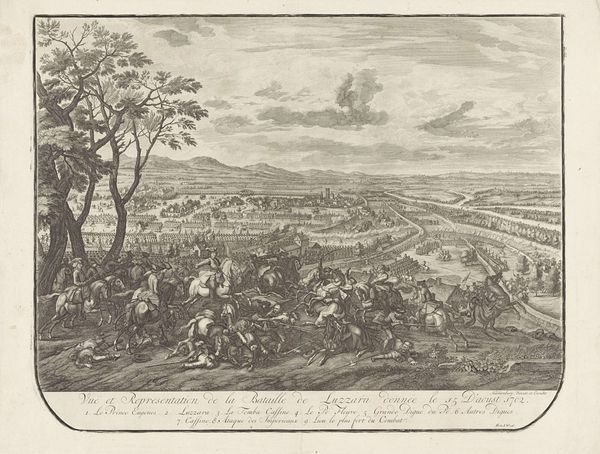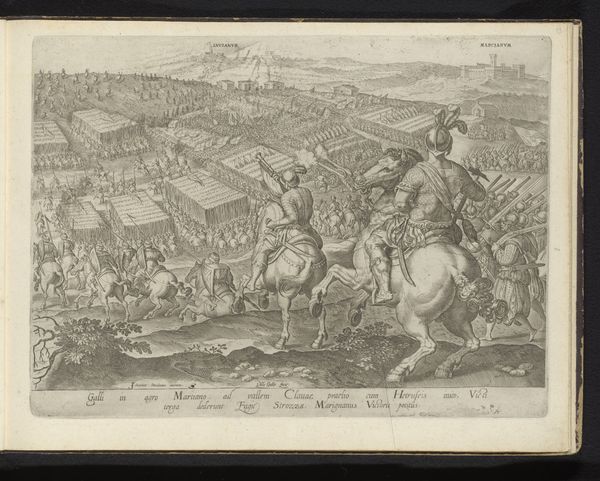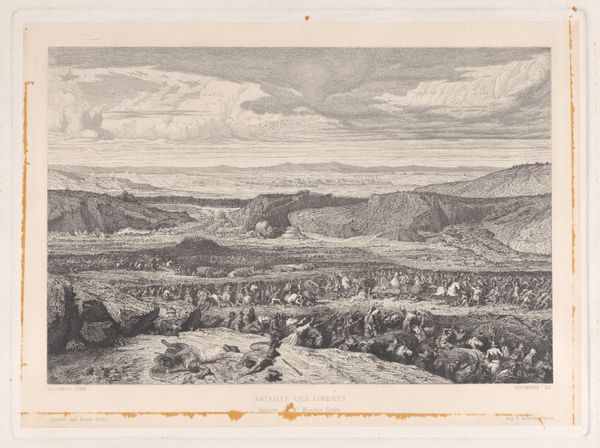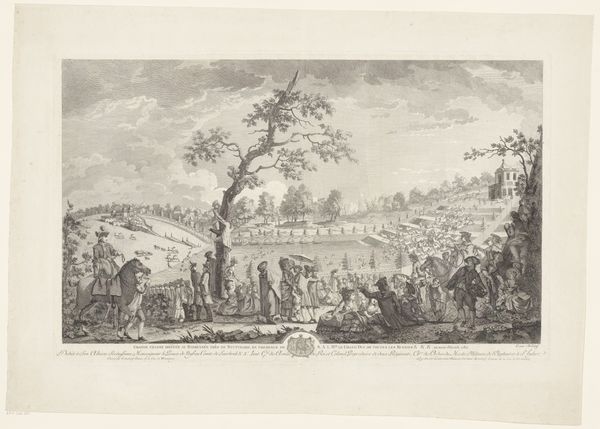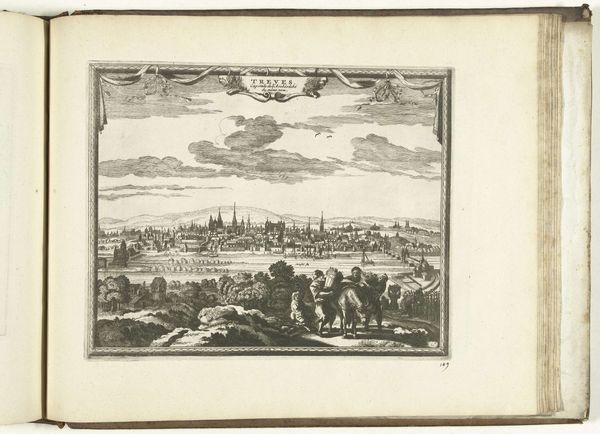
drawing, print, etching, paper
#
drawing
#
baroque
# print
#
etching
#
landscape
#
paper
Dimensions: 216 × 433 mm
Copyright: Public Domain
Editor: This is Jacques Rigaud's "View of Meudon Palace and Village," a print made with etching on paper, sometime between 1730 and 1740. I'm immediately struck by the sheer labor involved in creating this detailed landscape using such painstaking techniques. It gives a glimpse into a specific time and place. How do you interpret this work? Curator: Considering it materialistically, the etching process itself is key. Think of the physical effort—the crafting of the plate, the controlled corrosion by acid. This wasn't just about depicting a scene; it was about a deliberate process of reproduction, making the image accessible to a wider audience. The paper itself becomes a crucial element—its quality, its source—linking the artwork to networks of trade and consumption. How does the existence of such reproduction alter the meaning of the landscape? Editor: So, it's not just about the view of the Palace, but also the means by which that view was made available? Curator: Precisely. It forces us to question the hierarchy. Is the 'high art' of landscape painting inherently more valuable than the 'craft' of printmaking? By focusing on the labor and materials, we can see how this print blurs those lines, revealing the complex social and economic forces at play. Think of the cost involved, and who had access to prints like these. It's an early form of mass media, influencing perceptions of place and power. The materiality reveals access! Editor: That's a very different way of seeing it! I was focused on the landscape itself, but you've shown how the process of creating and distributing this image changes how we should think about its value. Curator: And isn’t it fascinating how a seemingly simple print reveals layers of material history and social context?
Comments
No comments
Be the first to comment and join the conversation on the ultimate creative platform.
